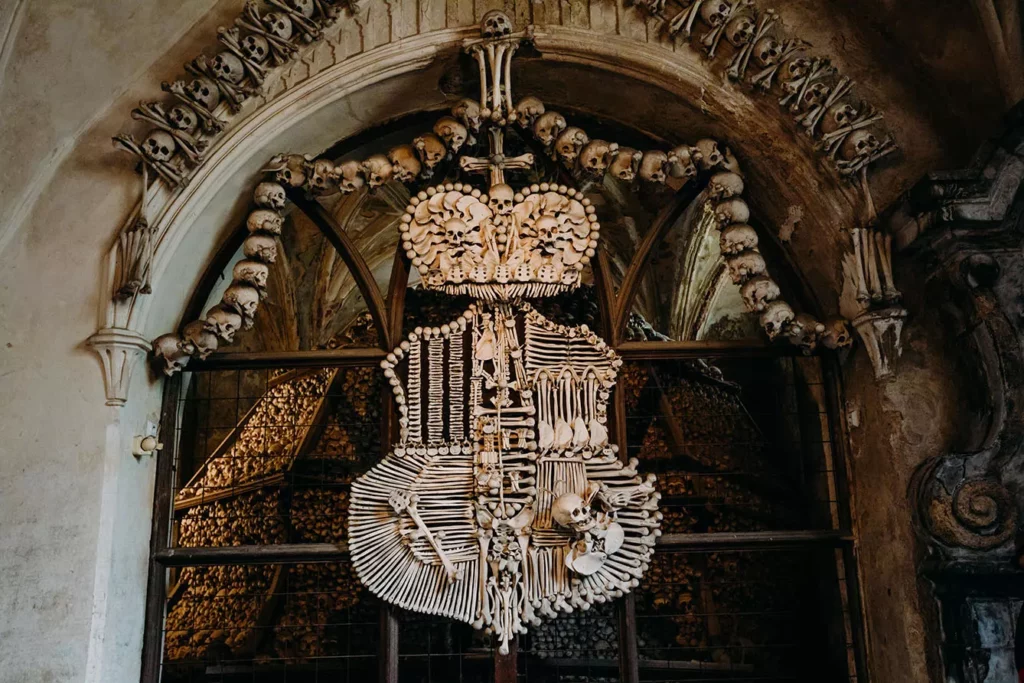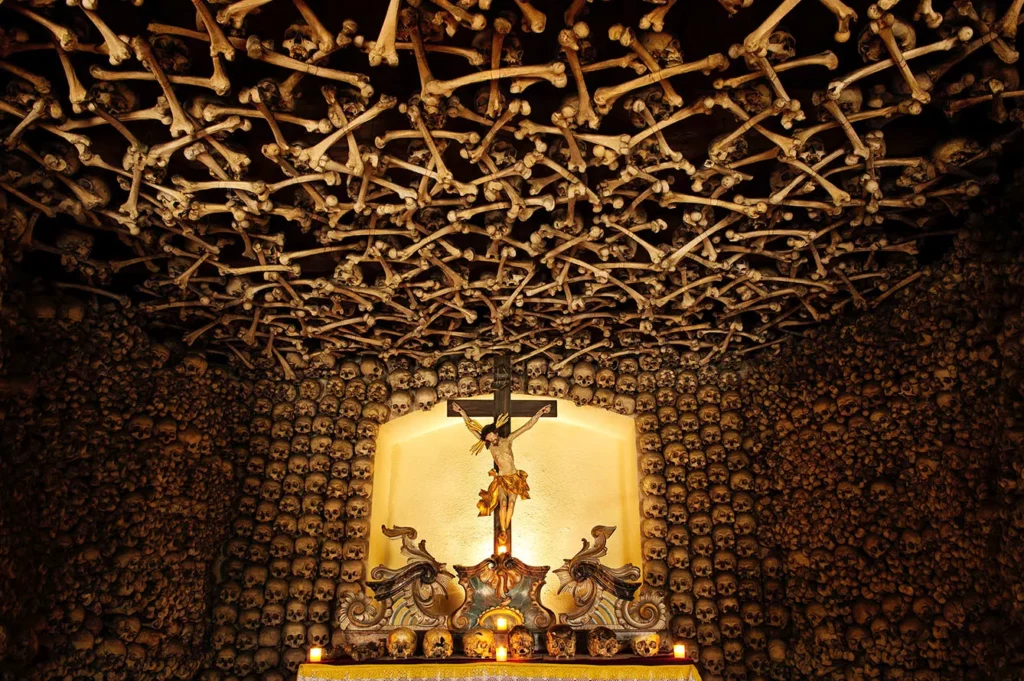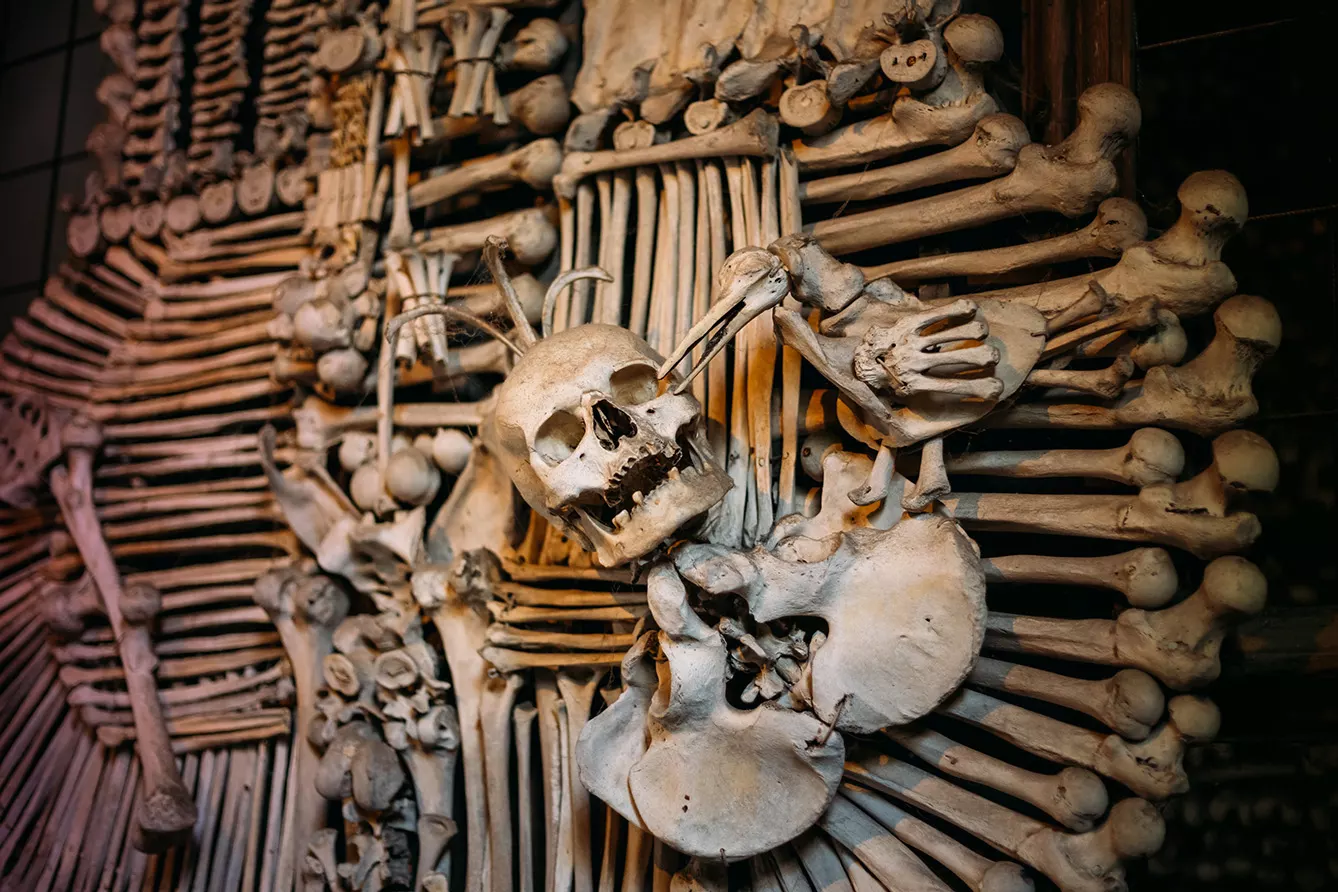Your word of the day is “ossuary.” Sounds innocent, like a picturesque Italian lake, until you realize that “ossis” is Latin for bone, and an ossuary is a bone collection created whenever you want to commemorate the dead, but there are just too many for a typical burial site. Common throughout the Christian world, the idea was particularly prevalent in Central Europe. Famous ossuaries are still found in Poland and Czechia.
Bone chapels: design macabre
Take a ten-minute walk from the center of the vibrant Kudowa-Zdrój mountain spa resort in the now-Polish part of the Sudetes, and you’ll find the aptly named 18th-century baroque Skull Chapel in Czermna. Small and inconspicuous from the outside, it could serve as the setting for a horror story when you look inside. Human skulls and bones are everywhere, forming a macabre wall paneling.

The low-hanging ceiling is made of authentic 3D Jolly Rogers, and the wall behind the altar is dotted with skulls. The three thousand human remains that form the chapel’s interior design are just the peak of the iceberg here. There are ten times more in the chapel’s crypt, which you can only see while visiting.
The chapel was built in the 1870s when local Czech priest Václav Tomášek found human bones in the embankment near the bell tower. He called the gravedigger and started unearthing the remains. But to their surprise, this was not just any grave, but a mass grave, or perhaps a collection leftover from a repurposed cemetery.
Memento zombie
For Tomašek, collecting the bones and turning them into interior design became a mission – of the memento mori kind. It was so to such an extent that when he died in 1804, he was buried in his creation. The other remains are mostly (and it’s just an educated guess) victims of plagues and wars, particularly the Thirty Years’ War in the first half of the 17th century, the Seven Years’ War in the mid-18th century, and cholera, which would cause outbreaks from time to time during those centuries.

The Czermna Skull Chapel is one of the biggest ossuaries around, but it’s not the only one. There is another in the Czech town of Mielnik. St. Peter and Paul’s Church there hoards the remains of some ten thousand victims of the Plague of 1520. And in another Czech town, Kutna Hora, there are possibly as many as 70 thousand buried under a chandelier of bones and skulls (though some estimates put that number closer to a mere 40 thousand).
The corpses in Kutna Hora may also be even older. They possibly date back to the Bubonic Plague of 1348 and the Hussite Wars during the Reformation at the beginning of the 15th century. As the former graveyard was unearthed during the development of the church, the ossuary was formed. Later rebuilt in several stages, it continues to inspire Hollywood and the videogame industry. Of course, it’s not the baroque memento mori style, but a newer one: beware of the zombie.







